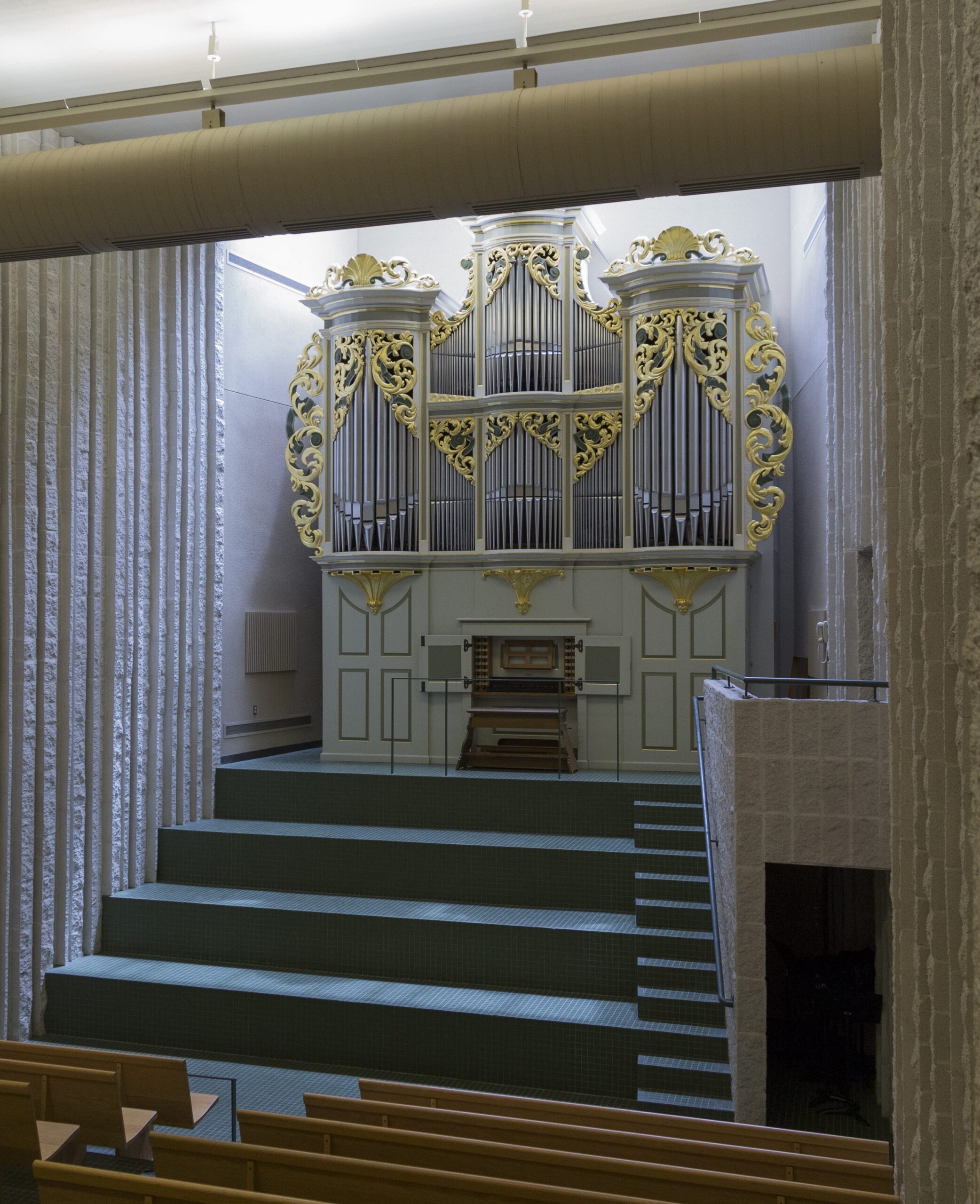Marilyn Mason Organ
Blanche Anderson Moore Hall, E.V. Moore Building
In 1985, the 300th anniversary of Bach’s birth, the University of Michigan inaugurated Blanche Anderson Moore Hall and its C. B. Fisk organ, modeled after the instruments of Gottfried Silbermann (1683-1753). Johann Sebastian Bach said of Silbermann, “His organs are excellent; he is appropriately named ‘Silbermann,’ for his organs have a silvery tone and thundering basses.” C. B. Fisk, Opus 87 draws its inspiration from the instruments of Silbermann but is not an exact replica of any single organ. It closely resembles several of the extant 2-manual Silbermann organs, most notably that of the St. Georgen-Kirche in Rötha, Germany.
The commission of this important addition to the Organ Department’s facilities was made possible in part through a generous gift from the estate of Judith Barnett Metz and Dr. Fred L. Metz. The School of Music, Theatre & Dance has named this organ the Marilyn Mason Organ, honoring Professor Mason for her many contributions to the Organ Department and the University of Michigan.
Organ Specifications
C.B. Fisk, Inc., Gloucester, MA, Op. 87, 1985
Hauptwerk (56 notes)
Bordun 16′
Principal 8′
Rohrflöte 8′
Octava 4′
Spitzflöte 4′
Quinta 3′
Octava 2′
Mixtur V 1 1/3′
Cornet III 2 2/3′ (from middle c)
Trommete 8′
Oberwerk (56 notes)
Gedackt 8′
Quintadena 8′
Principal 4′
Rohrflöte 4′
Nasat 3′
Octava 2′
Gemshorn 2′
Tertia 1 3/5′
Quinta 1 1/2′
Sifflet 1′
Mixtur III 1′
Chalumeau 8′
Pedal (30 notes)
Principalbaß 16′
Octavenbaß 8′
Octavenbaß 4′
Posaunenbaß 16′
Trommetenbaß 8′
Couplers
Oberwerk to Hauptwerk (shove coupler)
Hauptwerk to Pedal
Oberwerk to Pedal
Tremulant
Klingel (to signal the calcant)
27 stops, 35 ranks
Suspended mechanical key action; mechanical stop action
Well-tempered tuning devised by C. B. Fisk, Inc.
Pitch: a=440
Winding at 75mm pressure by electric blower or by bellows operated by an assistant (cal cant)

